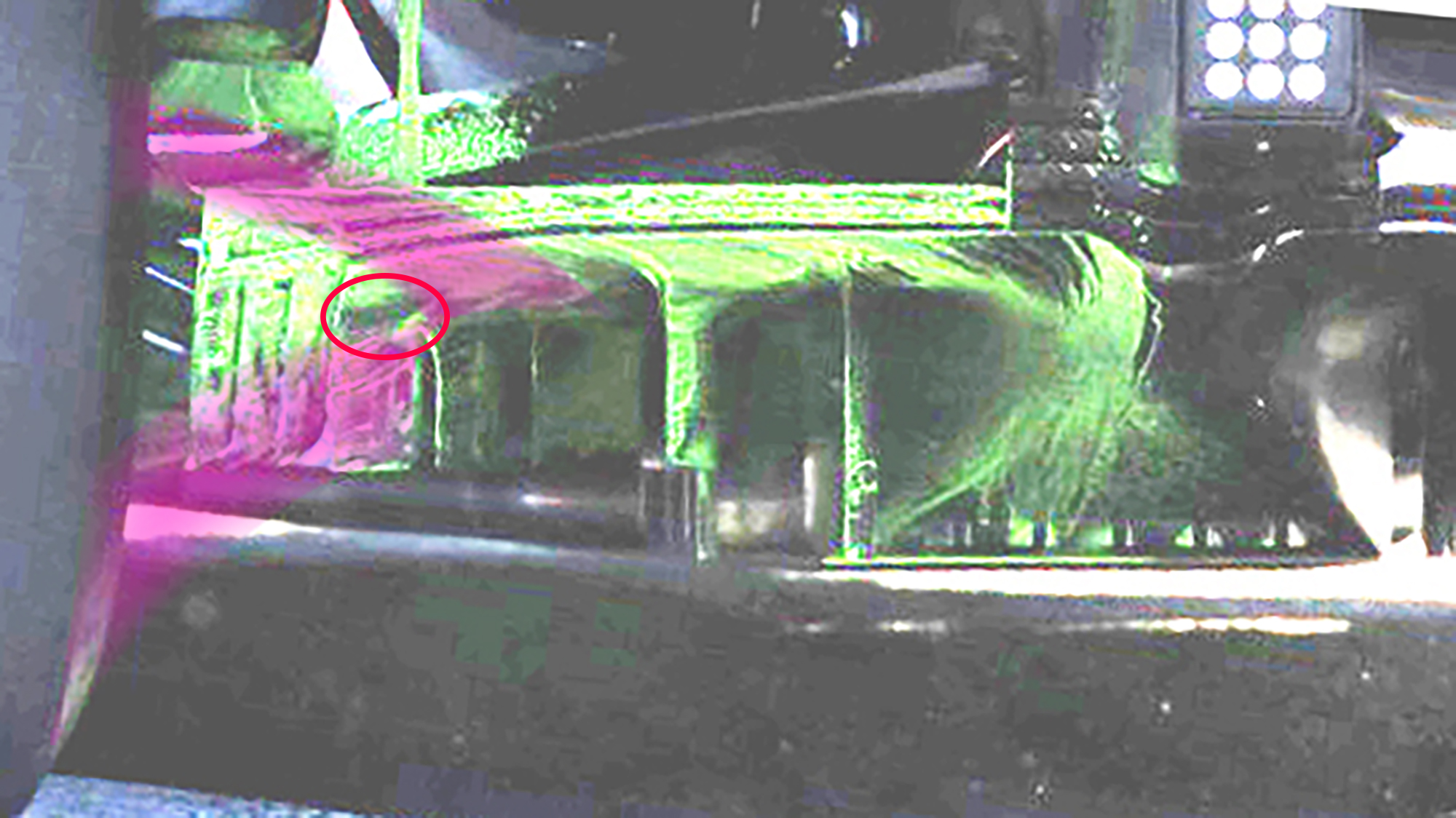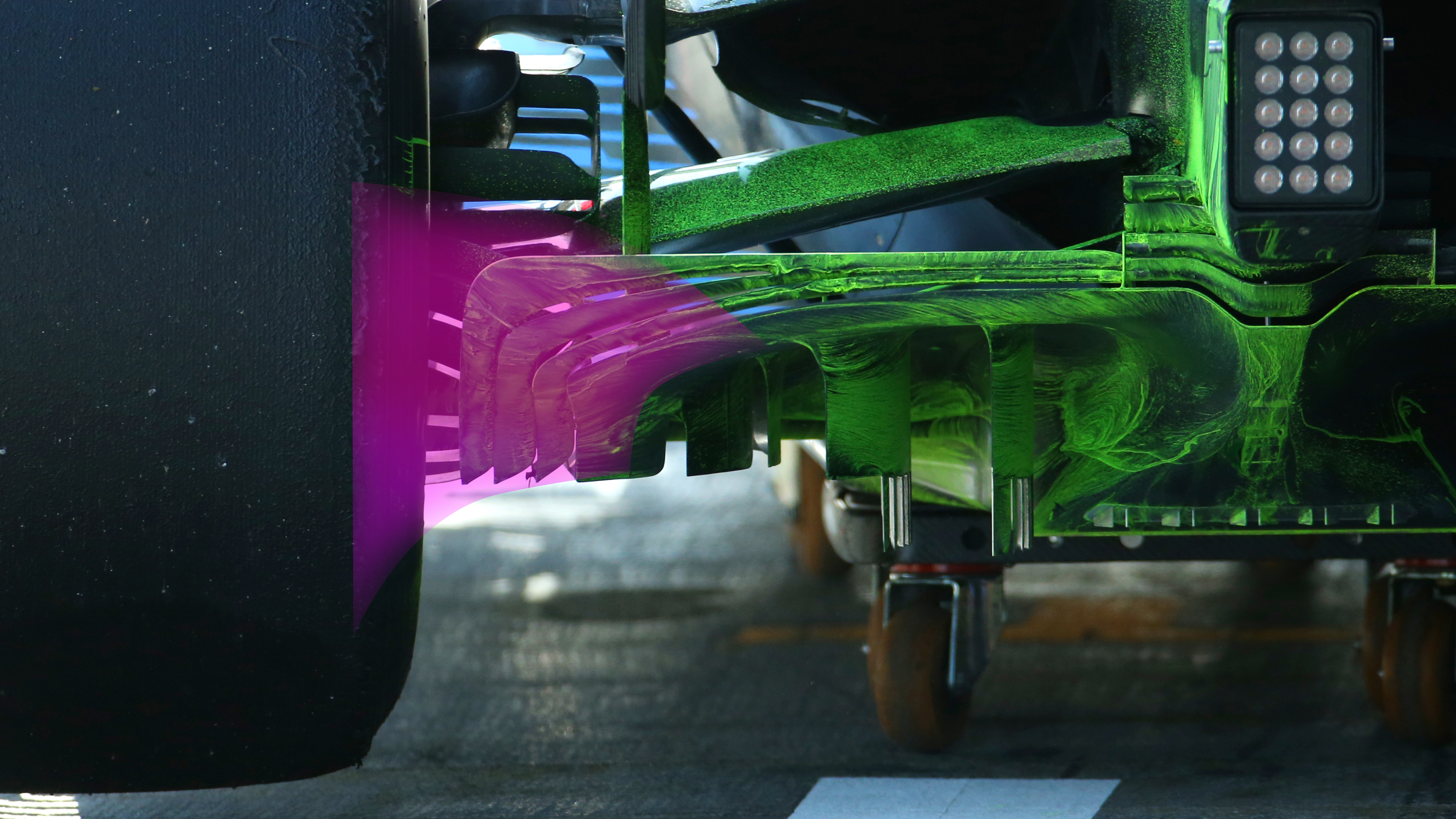Up Next

McLaren arrived at the second Formula 1 test of 2020 with a new floor, following some trials in week one at Barcelona.
At test one it had done some flo-vis paint work with the floor. Flo-vis is a luminous dust you mix with paraffin and apply to the car so it dries with airflow and shows the pattern that airflow creates. This only gives you the surface flow because at the rear of the car you don’t get the paint coming off and settling somewhere else.
Looking at the lines on the left on the outer vertical wall, the lines are heading downwards into the low pressure area behind the tyre (purple highlight) – which is what you want to try and achieve.
McLaren’s old floor

McLaren’s new floor

On the top surface of the diffuser, the flow lines are heading more towards the top half of the tyre – which doesn’t have as low a pressure behind it as the area of the tyre coming off the ground.
But in between these two, there’s an area where there’s not much flo-vis and it looks like there’s been a bit of airflow separation (orange arrow).
This is because if you have two surfaces with a sharp connection, you get different surface flow speeds and set up vortices or turbulence where they connect.
If this happens, you can affect the consistency of the downforce being produced by the underfloor as the car gets nearer the ground.
Looking at the new version, McLaren has made the outer corner a bigger radius to eliminate that potential airflow separation. It’s a compromise between the loss of diffuser volume and having better airflow.
The previous floor will probably give more downforce, but be more ride-height critical.
The new floor will have a slight reduction in total downforce, but be less critical to car set-up. So the average downforce will be better with the new floor.



